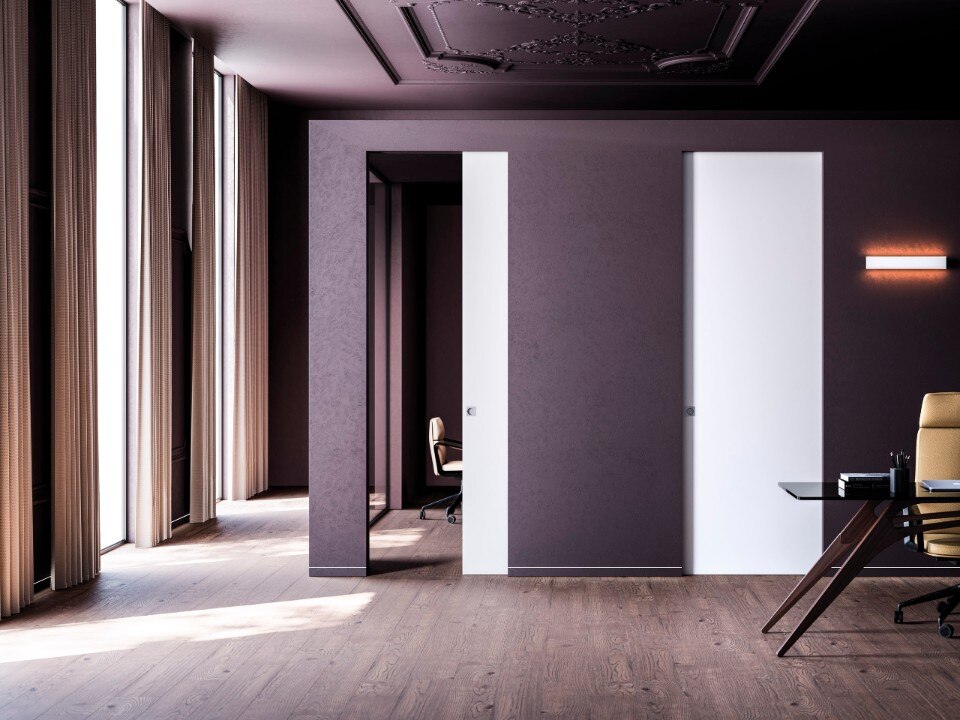This article was originally published in Domus 968 / April 2013
“At a certain point in our history, we thought that we might be more or less capable of designing indoor places, places closed inside walls, walls that contain small rooms or vast rooms, empty rooms or crowded rooms, places for people who live in those rooms or work there, and places for many people passing through, or places for solitude or places only for showing off, even very different places, for tea ceremonies and for washing your face and hands, and for sleeping with your lover.”
Ettore Sottsass, Le case hanno un interno, in 12 Interiors – Sottsass Associati – 12 Interni, Terrazzo, Milan 1996, p. 5; now in Milco Carboni and Barbara Radice (editors), Ettore Sottsass. Scritti 1946-2001, Neri Pozza Editore, Vicenza 2002, p. 487.

Ettore Sottsass produced an enormous quantity of drawings, making it seem as if life itself (not only work) stimulated him to create pictures of his every consideration and thought. Some are sketches, coloured studies for objects or buildings to be made; others are simply drawings with no other purpose than to be images.
Architettura monumentale, part of the 2003 exhibition “Architettura attenuata” (“Subdued Architecture”) held at the Antonia Jannone Gallery in Milan, is a drawing that belongs to this latter category, as it originated without a commission or a client and was conceived outside any specific context, or perhaps a context that was present only in the imagination of its maker. The drawing in question is an axonometric projection showing two sides of a volume standing on a tiled pavement with a grey sky in the background. The building is dark, rough and introverted, lacking an explicit function except that of being a piece of monumental architecture.

This inhabitable volume is the simple extrusion of a train-tunnel shape. The front elevation has a small door centred at the base. A series of variously sized windows, some of which are blue, is distributed over the two sides without apparent order. A loggia, placed up where the curve starts, reveals a glimpse of a bright-yellow floor.
In an attempt to create an exchange with Ettore Sottsass’s work, we saw in this drawing the possibility of a collaboration outside of time. To us, this very mysterious yet highly expressive design was so full of promise and open for development. As already mentioned, the function is left unspecified, along with the context. However, we do know that Sottsass made the drawing at his vacation home on the island of Filicudi. Consequently we thought it might be considered as a house, perhaps located on an island overlooking the sea.

In order to reconstruct it in scale, we used the few and contradictory indications present in the drawing: the size of the windows, their position in relation to a hypothetical number of indoor levels, and the grid of the outdoor pavement, the only element that could give us the ratio between the width and depth of the building in plan. Our analysis led us to deduce, or better suppose, that it has a square plan with 10-metre sides and a total height of 12 metres. Based on the volume and the partial definition of the outside, our project is an attempt to complete all of the facades and imagine its interior. In other words, we tried to see what might be hidden inside this shape and how it would be possible to live in it.
Our idea was to insert an autonomous element that would inhabit the inside, but leave the vaulted space intact, thus preserving its character. This element is an abstract structure, entirely yellow, which dominates the light-coloured interior, thereby always allowing one to distinguish between the two. A grid of columns and beams is placed in the black shell, relating to it both freely and dependently. It is detached from the walls, but corresponds with the system of different apertures. Its geometry is rigid, but it reacts to the curve of the great vaulted ceiling.



FADE Family is the new approach to outdoor living
The latest addition to the PLUST Collection is a line of furniture inspired by the texture of white stone, which illuminates as evening falls.



